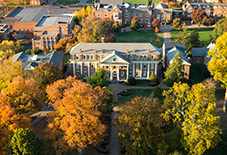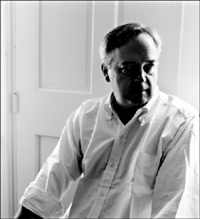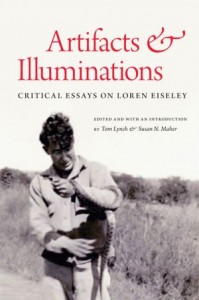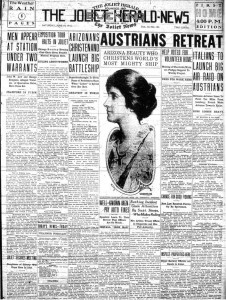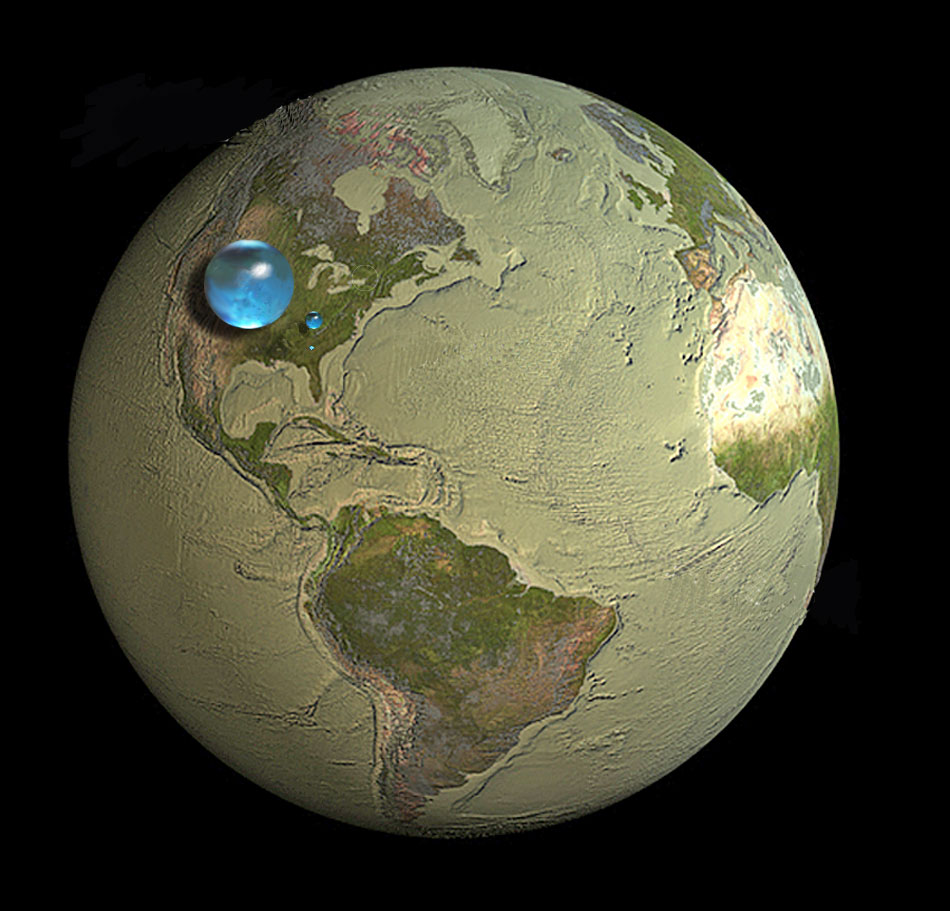 Part of an extensive series by this venerable university press, The Cambridge Introduction to Literature and the Environment is a detailed and comprehensive overview of the many relations among literature, criticism, and the natural environment. Author Timothy Clark of Durham University has produced an ambitious, nuanced, and critically adept introduction to the heterogeneous field of ecocriticism that has emerged as an important current of cultural studies over the past two decades. Explicitly pitched to professors as a pedagogical resource but also valuable as a survey of a rapidly maturing academic field, this slim but substantive book is immensely useful for students and professional scholars alike. Clark effectively models the praxis of textual interpretation and intellectual engagement in his writing, which is unfailingly smart and stylistically lucid.
Part of an extensive series by this venerable university press, The Cambridge Introduction to Literature and the Environment is a detailed and comprehensive overview of the many relations among literature, criticism, and the natural environment. Author Timothy Clark of Durham University has produced an ambitious, nuanced, and critically adept introduction to the heterogeneous field of ecocriticism that has emerged as an important current of cultural studies over the past two decades. Explicitly pitched to professors as a pedagogical resource but also valuable as a survey of a rapidly maturing academic field, this slim but substantive book is immensely useful for students and professional scholars alike. Clark effectively models the praxis of textual interpretation and intellectual engagement in his writing, which is unfailingly smart and stylistically lucid.
While several good overviews of ecocriticism have been published previously, some are more than 15 years old while others are edited volumes containing a diverse array of essays written by different scholars. Clark’s book is therefore both a much-needed update on as well as coherent assessment of the present state of ecocriticism, which he defines as the “study of the relationship between literature and the physical environment, usually considered from out of the current global environmental crisis and its revisionist challenge to given modes of thought and practice” (xiii). While Clark sees ecocriticism as “a provocative misfit in literary and cultural debate” (3) since it is a relatively young and unapologetically interdisciplinary field of inquiry, he convincingly documents its contemporary relevance as a means of bringing the humanities to bear on matters of ecological and political import.
Clark provides a 30,000-foot-high perspective on a sprawling and still-evolving critical movement that includes not just the study of Anglo-American nature writing (its historic core concern), but also embraces ecofeminism, critical theory, postcolonial studies, evolutionary biology, environmental justice, animal studies, and other interdisciplinary modes of humanistic inquiry. At the same time, Clark frequently descends from this high-altitude viewpoint to systematically inspect the surface, by which I refer to his frequent close readings of particular texts, authors, genres, or philosophical issues. In doing so, he models for students how ecocritics do their work of interrogating texts, unpacking words and concepts, making connections among disparate themes or ideas, etc. This effortless interplay between comprehensive critical overview and concrete interpretative engagement makes the text useful both for classroom use with advanced undergraduate or graduate students as well as the seasoned scholar seeking insights into ecocritical topics and methods.
The book includes an introduction and 20 chapters, which in turn are grouped into four main sections, the titles of which are more poetically suggestive than transparently informative: “Romantic and Anti-Romantic,” “The Boundaries of the Political,” “Science and the Struggle for Intellectual Authority,” and “The Animal Mirror.” Interspersed throughout are 13 concise “quandaries,” passages in which Clark poses “open invitations to further thought” (xiii). These are enclosed within grey boxes on the page, which along with numerous illustrations provide an arresting visual aesthetic as well as opportunities for stimulating dialogue within the college classroom.
In terms of scope, Clark covers tremendous ground in his elucidation of the connections among literature, criticism, and the natural environment — from Romanticism to questions of genre to current debates about posthumanism; from ecofeminism to science studies to nature writing to environmental justice; from ethics to animal studies to climate change. Two particular chapters highlight Clark’s success in weaving together and making sense of this wide array of subjects as well as his skills in parsing the meaning and relevance of particular texts.
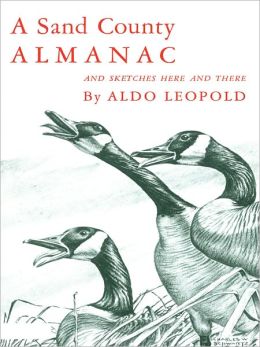 In Chapter 7, “Thinking like a Mountain” (also the famous title of an oft-cited essay by the American conservationist, ecologist, and writer, Aldo Leopold), Clark identifies an important tension within environmentalism between radical theory and reformist practice. In his words, environmental advocates “must speak in terms accepted within existing structures of governance and economics, the very things they may consider ultimately responsible for environmental degradation in the first place” (77). Next follows a detailed reading of two foundational texts of 20th century American environmental writing — Leopold’s A Sand County Almanac; and, Sketches Here and There (1949) and Rachel Carson’s Silent Spring (1962) — in which Clark traces the aforementioned quandary between radicalism and pragmatism in the rhetoric of Leopold and Carson. While I feel his interpretation downplays the paradigm-challenging environmental ethic espoused by Leopold as well as the explicit critique of the industrial-chemical-military-agricultural complex that is at the heart of Carson’s Silent Spring, I nonetheless greatly admire Clark’s astute and eloquent explication of the form and rhetoric of Sand County Almanac (78-9) that seems tailor-made for introducing students to the deceptively simple yet well-wrought structure of this landmark work.
In Chapter 7, “Thinking like a Mountain” (also the famous title of an oft-cited essay by the American conservationist, ecologist, and writer, Aldo Leopold), Clark identifies an important tension within environmentalism between radical theory and reformist practice. In his words, environmental advocates “must speak in terms accepted within existing structures of governance and economics, the very things they may consider ultimately responsible for environmental degradation in the first place” (77). Next follows a detailed reading of two foundational texts of 20th century American environmental writing — Leopold’s A Sand County Almanac; and, Sketches Here and There (1949) and Rachel Carson’s Silent Spring (1962) — in which Clark traces the aforementioned quandary between radicalism and pragmatism in the rhetoric of Leopold and Carson. While I feel his interpretation downplays the paradigm-challenging environmental ethic espoused by Leopold as well as the explicit critique of the industrial-chemical-military-agricultural complex that is at the heart of Carson’s Silent Spring, I nonetheless greatly admire Clark’s astute and eloquent explication of the form and rhetoric of Sand County Almanac (78-9) that seems tailor-made for introducing students to the deceptively simple yet well-wrought structure of this landmark work.
Similarly engaging is Chapter 13, “Questions of Scale,” in which Clark addresses the interlinked topics of bioregionalism, climate change, global versus local environmental activism, environmental sloganeering, and (lest you think he’s forgotten about literature) ecopoetry. One excellent feature of this chapter is Clark’s penchant for moving beyond Anglo-American literary borders, as he does in his commentary here on Derek Walcott and Édouard Glissant (132-135). Then there’s his especially insightful riff on climate change and the now-clichéd dictum of the Sierra Club, “Think globally, act locally.”
While this phrase “says, in effect: try to understand ecological systems on the largest possible scale and then take action locally in accordance with that understanding,” Clark reveals how the urgent ecological crisis of climate change demonstrates an essential paradox — “one cannot only act locally, [because] . . . any action affects the whole world, however, minutely” (136, emphasis added). Clark correctly notes that the global/local tension as well as climate change are examples of critically important environmental issues that up to now have received scant attention from most ecocritics. What such engagement might entail is illustrated by a reading of Gary Snyder’s bioregional ecopoetry in the final pages of the chapter, work which “use[s] multiple scales of space and time to form a critique of the destructive, one-dimensional and ultimately fragile sphere of the modern neoliberal state” (138).
Two last points about the book, which is beautifully produced by Cambridge University Press (and thus inspired me to newly peruse the titles of this expansive series of “Introduction to” volumes). First, I greatly appreciate the “Further Reading” bibliography at the end, which lists well-chosen sources according to the text’s table of contents, rather than merely (and far less usefully) alphabetically. For those planning an advanced undergraduate course or graduate seminar on, say, “Environmental Literature” or “Ecocriticism or Nature in Literature” or “Art, Humanities, and the Environment,” etc., this bibliography is a must-read, as it provides both seminal background references as well as a cornucopia of potential syllabus readings.
On a less enthusiastic note, the conspicuous omission (for me, at least) of cities, sustainability, and urbanization from the book’s index reveal one lacuna in Clark’s otherwise catholic coverage of contemporary environmental concerns. In a world of accelerating climate change, ongoing pollution, feeble environmental regulation, habitat loss, poverty, and persistent socioeconomic inequity, the global movement toward urbanization that has paralleled the human population explosion (as of 2008, over half the world’s population now resides in urban areas) is something that ecocriticism has finally begun to acknowledge in productive ways, as urban-focused studies published in the field’s foremost scholarly journal, ISLE, testify. Clark’s otherwise valuable and instructive chapter on environmental justice (87-95), for example, misses an opportunity to connect this political movement to its urban origins and, somewhat curiously, features an extended reading of a prototypically male wilderness narrative set in the American West (Norman Maclean’s 1976 novella, A River Runs Through It).
That is, however, a decidedly minor quibble about a skillfully written, eminently readable, and immensely useful book. Far from a pedestrian college textbook, Clark’s Introduction to Literature and the Environment is an erudite survey of ecocriticsm accessible to both scholar and student, as well as a practical tool for demonstrating literature’s representation of and engagement with environmental issues of all kinds. As Clark writes in his concise and hard-hitting final chapter, “The limitations as well as the excitement of ecocritical work to date may reflect the fact that environmental questions are not just a matter of aesthetics, politics, poetics or ethics, but can affect certain ground rules as to what these things mean” (202). In other words, ecocriticism — and by extension, literature and the humanities — matters greatly, for it must join (and provide constructive critiques of) science and policy in engaging the pressing environmental issues of our time. With that bold claim in mind, I can think of no better intellectual map of ecocriticism’s present state or future prospects than this book.
Timothy Clark. The Cambridge Introduction to Literature and the Environment. Cambridge and New York: Cambridge University Press, 2011. Pp. vii+254.
Note: This is a modified version of a review that will appear in a forthcoming issue of the journal Modern Philology.

